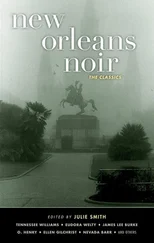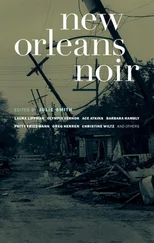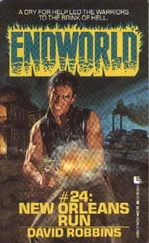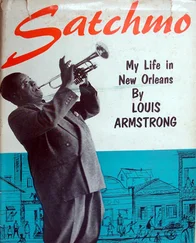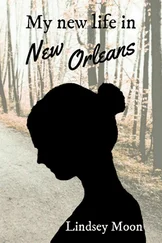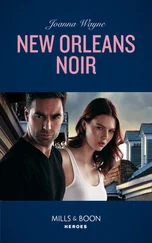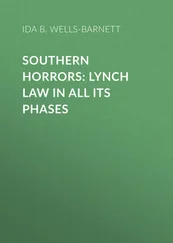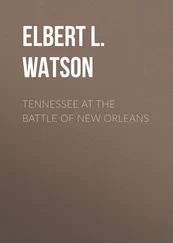Ida B. Wells-Barnett - Mob Rule in New Orleans
Здесь есть возможность читать онлайн «Ida B. Wells-Barnett - Mob Rule in New Orleans» — ознакомительный отрывок электронной книги совершенно бесплатно, а после прочтения отрывка купить полную версию. В некоторых случаях можно слушать аудио, скачать через торрент в формате fb2 и присутствует краткое содержание. Жанр: foreign_antique, sociology_book, на английском языке. Описание произведения, (предисловие) а так же отзывы посетителей доступны на портале библиотеки ЛибКат.
- Название:Mob Rule in New Orleans
- Автор:
- Жанр:
- Год:неизвестен
- ISBN:нет данных
- Рейтинг книги:5 / 5. Голосов: 1
-
Избранное:Добавить в избранное
- Отзывы:
-
Ваша оценка:
- 100
- 1
- 2
- 3
- 4
- 5
Mob Rule in New Orleans: краткое содержание, описание и аннотация
Предлагаем к чтению аннотацию, описание, краткое содержание или предисловие (зависит от того, что написал сам автор книги «Mob Rule in New Orleans»). Если вы не нашли необходимую информацию о книге — напишите в комментариях, мы постараемся отыскать её.
Mob Rule in New Orleans — читать онлайн ознакомительный отрывок
Ниже представлен текст книги, разбитый по страницам. Система сохранения места последней прочитанной страницы, позволяет с удобством читать онлайн бесплатно книгу «Mob Rule in New Orleans», без необходимости каждый раз заново искать на чём Вы остановились. Поставьте закладку, и сможете в любой момент перейти на страницу, на которой закончили чтение.
Интервал:
Закладка:
In talking to the sergeant about the case, the captain asked about the Negro's fighting ability, and the sergeant answered that Charles, though he called him Robinson then, was a desperate man, and it would be best to shoot him before he was given a chance to draw his pistol upon any of the officers.
This instruction was given before anybody had been killed, and the only evidence that Charles was a desperate man lay in the fact that he had refused to be beaten over the head by Officer Mora for sitting on a step quietly conversing with a friend. Charles resisted an absolutely unlawful attack, and a gun fight followed. Both Mora and Charles were shot, but because Mora was white and Charles was black, Charles was at once declared to be a desperado, made an outlaw, and subsequently a price put upon his head and the mob authorized to shoot him like a dog, on sight.
The New Orleans Picayune of Wednesday morning said:
But he has gone, perhaps to the swamps, and the disappointment of the bluecoats in not getting the murderer is expressed in their curses, each man swearing that the signal to halt that will be offered Charles will be a shot.
In that same column of the Picayune it was said:
Hundreds of policemen were about; each corner was guarded by a squad, commanded either by a sergeant or a corporal, and every man had the word to shoot the Negro as soon as he was sighted. He was a desperate black and would be given no chance to take more life.
Legal sanction was given to the mob or any man of the mob to kill Charles at sight by the Mayor of New Orleans, who publicly proclaimed a reward of two hundred and fifty dollars, not for the arrest of Charles, not at all, but the reward was offered for Charles's body, "dead or alive." The advertisement was as follows:
$250 REWARD
Under the authority vested in me by law, I hereby offer, in the name of the city of New Orleans, $250 reward for the capture and delivery, dead or alive, to the authorities of the city, the body of the Negro murderer, ROBERT CHARLES, who, on Tuesday morning, July 24, shot and killed Police Captain John T. Day and Patrolman Peter J. Lamb, and wounded Patrolman August T. Mora.
PAUL CAPDEVIELLE, MayorThis authority, given by the sergeant to kill Charles on sight, would have been no news to Charles, nor to any colored man in New Orleans, who, for any purpose whatever, even to save his life, raised his hand against a white man. It is now, even as it was in the days of slavery, an unpardonable sin for a Negro to resist a white man, no matter how unjust or unprovoked the white man's attack may be. Charles knew this, and knowing to be captured meant to be killed, he resolved to sell his life as dearly as possible.
The next step in the terrible tragedy occurred between 2:30 and 5 o'clock Tuesday morning, about four hours after the affair on Dryades Street. The man hunt, which had been inaugurated soon after Officer Mora had been carried to the station, succeeded in running down Robert Charles, the wounded fugitive, and located him at 2023 4th Street. It was nearly 2 o'clock in the morning when a large detail of police surrounded the block with the intent to kill Charles on sight. Capt. Day had charge of the squad of police. Charles, the wounded man, was in his house when the police arrived, fully prepared, as results afterward showed, to die in his own home. Capt. Day started for Charles's room. As soon as Charles got sight of him there was a flash, a report, and Day fell dead in his tracks. In another instant Charles was standing in the door, and seeing Patrolman Peter J. Lamb, he drew his gun, and Lamb fell dead. Two other officers, Sergeant Aucoin and Officer Trenchard, who were in the squad, seeing their comrades, Day and Lamb, fall dead, concluded to raise the siege, and both disappeared into an adjoining house, where they blew out their lights so that their cowardly carcasses could be safe from Charles's deadly aim. The calibre of their courage is well shown by the fact that they concluded to save themselves from any harm by remaining prisoners in that dark room until daybreak, out of reach of Charles's deadly rifle. Sergeant Aucoin, who had been so brave a few hours before when seeing the two colored men sitting on the steps, talking together on Dryades Street, and supposing that neither was armed, now showed his true calibre. Now he knew that Charles had a gun and was brave enough to use it, so he hid himself in a room two hours while Charles deliberately walked out of his room and into the street after killing both Lamb and Day. It is also shown, as further evidence of the bravery of some of New Orleans' "finest," that one of them, seeing Capt. Day fall, ran seven blocks before he stopped, afterwards giving the excuse that he was hunting for a patrol box.
At daybreak the officers felt safe to renew the attack upon Charles, so they broke into his room, only to find that—what they probably very well knew—he had gone. It appears that he made his escape by crawling through a hole in the ceiling to a little attic in his house. Here he found that he could not escape except by a window which led into an alley, which had no opening on 4th Street. He scaled the fence and was soon out of reach.
It was now 5 o'clock Tuesday morning, and a general alarm was given. Sergeant Aucoin and Corporal Trenchard, having received a new supply of courage by returning daylight, renewed their effort to capture the man that they had allowed to escape in the darkness. Citizens were called upon to participate in the man hunt and New Orleans was soon the scene of terrible excitement. Officers were present everywhere, and colored men were arrested on all sides upon the pretext that they were impertinent and "game niggers." An instance is mentioned in the Times-Democrat of the twenty-fifth and shows the treatment which unoffending colored men received at the hands of some of the officers. This instance shows Corporal Trenchard, who displayed such remarkable bravery on Monday night in dodging Charles's revolver, in his true light. It shows how brave a white man is when he has a gun attacking a Negro who is a helpless prisoner. The account is as follows:
The police made some arrests in the neighborhood of the killing of the two officers. Mobs of young darkies gathered everywhere. These Negroes talked and joked about the affair, and many of them were for starting a race war on the spot. It was not until several of these little gangs amalgamated and started demonstrations that the police commenced to act. Nearly a dozen arrests were made within an hour, and everybody in the vicinity was in a tremor of excitement.
It was about 1 o'clock that the Negroes on Fourth Street became very noisy, and George Meyers, who lives on Sixth Street, near Rampart, appeared to be one of the prime movers in a little riot that was rapidly developing. Policeman Exnicios and Sheridan placed him under arrest, and owing to the fact that the patrol wagon had just left with a number of prisoners, they walked him toward St. Charles Avenue in order to get a conveyance to take him to the Sixth Precinct station.
A huge crowd of Negroes followed the officers and their prisoners. Between Dryades and Baronne, on Sixth, Corporal Trenchard met the trio. He had his pistol in his hand and he came on them running. The Negroes in the wake of the officers, and prisoner took to flight immediately. Some disappeared through gates and some over fences and into yards, for Trenchard, visibly excited, was waving his revolver in the air and was threatening to shoot. He joined the officers in their walk toward St. Charles Street, and the way he acted led the white people who were witnessing the affair to believe that his prisoner was the wanted Negro. At every step he would punch him or hit him with the barrel of his pistol, and the onlookers cried, "Lynch him!" "Kill him!" and other expressions until the spectators were thoroughly wrought up. At St. Charles Street Trenchard desisted, and, calling an empty ice wagon, threw the Negro into the body of the vehicle and ordered Officer Exnicios to take him to the Sixth Precinct station.
Читать дальшеИнтервал:
Закладка:
Похожие книги на «Mob Rule in New Orleans»
Представляем Вашему вниманию похожие книги на «Mob Rule in New Orleans» списком для выбора. Мы отобрали схожую по названию и смыслу литературу в надежде предоставить читателям больше вариантов отыскать новые, интересные, ещё непрочитанные произведения.
Обсуждение, отзывы о книге «Mob Rule in New Orleans» и просто собственные мнения читателей. Оставьте ваши комментарии, напишите, что Вы думаете о произведении, его смысле или главных героях. Укажите что конкретно понравилось, а что нет, и почему Вы так считаете.

